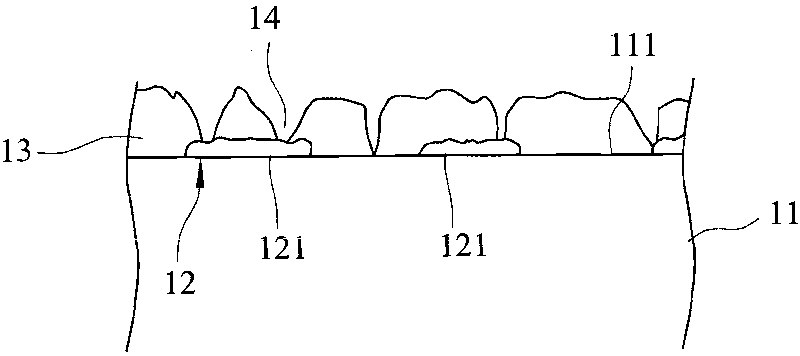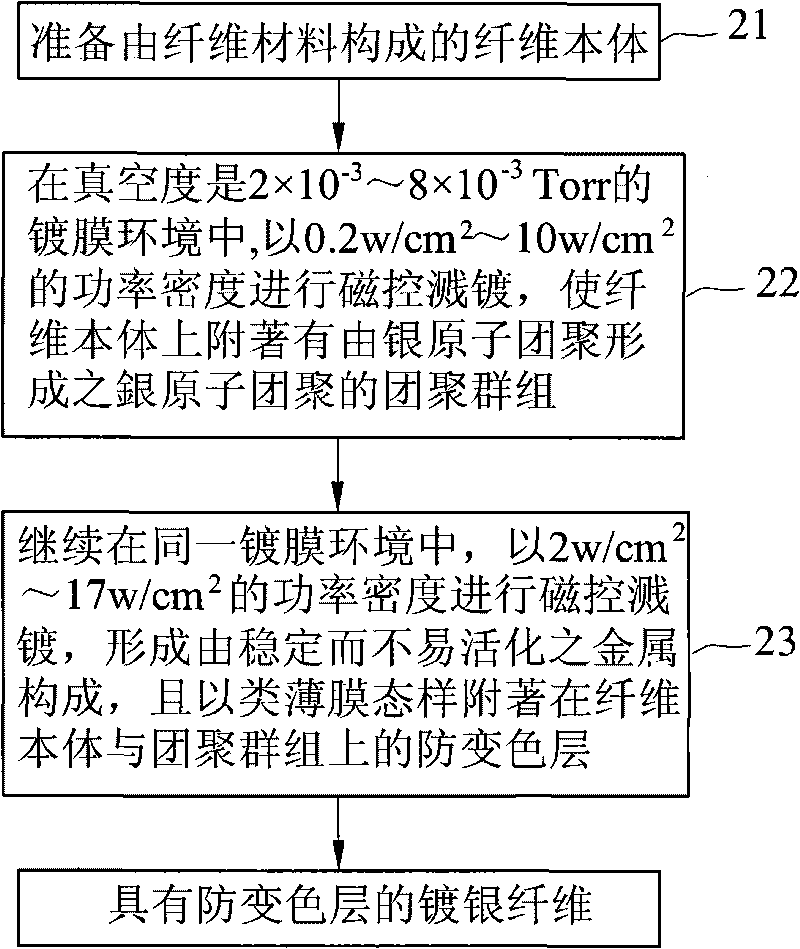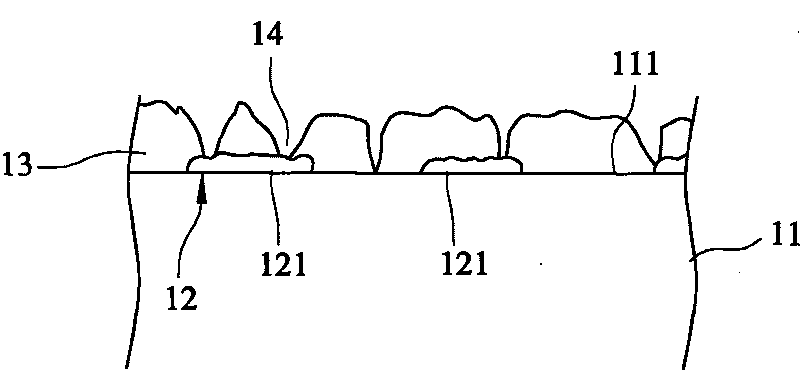Silver plated fiber with anti-discoloration layer and manufacturing method thereof
A silver-plated fiber and anti-discoloration technology, which is applied in fiber treatment, coating, sputter plating, etc., can solve the problems that cannot include non-dissolving antibacterial fiber quantitative test standards, and achieve the effect of preventing discoloration
- Summary
- Abstract
- Description
- Claims
- Application Information
AI Technical Summary
Problems solved by technology
Method used
Image
Examples
experiment example 1 007
[0039] Experimental Example 1 2007 / 05 / 11; serial number TX42192 / 2007 / PL
[0040] (a) The fiber body is a 30g basis weight melt-blown non-woven fabric (white), and the silver atoms are agglomerated in a vacuum of 2×10 with argon gas -3 Torr sputtering environment at 0.3w / cm 2 It is formed by sputtering with high sputtering power, the content is about 100ppm, and the anti-tarnish layer is made of titanium and matched with 5w / cm 2 The sputtering power coating is formed, the thickness is
[0041] (b) The fiber body is 50 denier knitted POLYESTER woven fabric (blue), and the silver atom reunion is at a vacuum degree of 3.75×10 -3 Torr sputtering environment at 0.3w / cm 2 It is formed by sputtering with high sputtering power, the content is about 100ppm, and the anti-tarnish layer is made of titanium and matched with 5w / cm 2 The sputtering power coating is formed with a thickness of about
[0042] (a), (b) two kinds of silver-coated fibers are effective against Staphylococcu...
experiment example 2 007
[0043] Experimental Example 2 2007 / 11 / 24 Number: TXD0455 / 2007 / HH
[0044] The fiber body of this experimental example is a 30g basis weight melt-blown non-woven fabric (white), and the silver atoms are agglomerated at a vacuum degree of 6 × 10 -3 1.5w / cm in Torr's sputtering environment 2 It is formed by sputtering with high sputtering power, the content is about 300ppm, and the anti-tarnish layer is made of titanium and matched with 8w / cm 2 The sputtering power coating is formed with a thickness of about
[0045] The silver-plated fiber of this experimental example has a sterilizing rate of 99.9% for multidrug-resistant Staphylococcus aureus (MRSA, methicillinresistant Staphylococcus aureus), and has passed the quantitative test of AATCC100 (bacteria count determination method) in the United States, and has excellent antibacterial efficacy.
experiment example 3 008
[0046] Experimental Example 3 2008 / 01 / 03 Number: TXD1644 / 2007 / HH
[0047] The fiber body of this experimental example is a 30g basis weight melt-blown non-woven fabric (white), and the silver atoms are agglomerated at a vacuum degree of 8 × 10 -3 Torr sputtering environment at 0.5w / cm 2 It is formed by sputtering with high sputtering power, the content is about 200ppm, the anti-tarnish layer is made of titanium and matched with 8w / cm 2 The sputtering power coating is formed, the thickness is
[0048] The silver-plated fiber of this experimental example has a sterilizing rate of 99.9% against Staphylococcus aureus, and has passed the quantitative test of AATCC100 (bacteria count determination method) in the United States, and has excellent antibacterial efficacy.
[0049] Compared with the current antibacterial fiber, the present invention mainly proposes a new, dry magnetron sputtering method to make antibacterial silver-plated fiber, and the silver-plated fiber obtained b...
PUM
 Login to View More
Login to View More Abstract
Description
Claims
Application Information
 Login to View More
Login to View More - R&D
- Intellectual Property
- Life Sciences
- Materials
- Tech Scout
- Unparalleled Data Quality
- Higher Quality Content
- 60% Fewer Hallucinations
Browse by: Latest US Patents, China's latest patents, Technical Efficacy Thesaurus, Application Domain, Technology Topic, Popular Technical Reports.
© 2025 PatSnap. All rights reserved.Legal|Privacy policy|Modern Slavery Act Transparency Statement|Sitemap|About US| Contact US: help@patsnap.com



